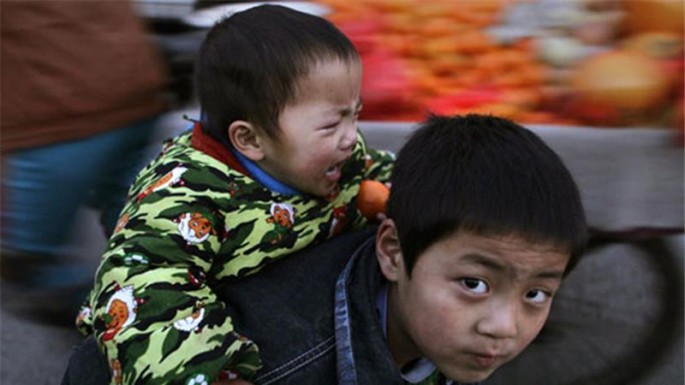China's birth rate is decreasing, with the total population of the country expected to start falling as early as 2017, according to a report by Shanghai-based China Business News on Monday.
In China, children under 15 makes up 15-18 percent of the total population. The birth rate is also dangerously low.
The 15-18 population made up 16.6 percent of the population in 2010, decreasing from 22.9 percent from 2000. Previous figures include 27.7 percent in 1990, 33.6 percent in 1982 and 40.7 percent in 1964.
Back in the 1990s, more than 20 million Chinese children were born each year. Since then, the number has dropped to 16 million, with the lowest number recorded in 2006 at 15.8 million, according to China Population Association.
According to a research report, primary school enrollment has declined from 25 million in 1997 to 16.58 million in 2014. Junior high school enrollment has also decreased from 22.63 million to 14.48 million during that same period.
The head of a village kindergarten in Xuzhou of Jiangxu Province has noted the drop in annual enrollment, with less than 10 students enrolling in each junior class, from a previous number of 30 several years ago. The same is true for other kindergartens in the area, according to the head.
According to the U.N. document "World Population Prospects: The 2010 Revision," China's population will peak in 2026 given an estimated medium birth rate. However, the report says that in case of a low birth rate, the population will peak at 2017, with the country's population peaking at 1.36 billion people.
Experts now agree that China's population will peak either in 2017 or earlier in 2016.
According to population experts, the population decline will be harmful to China, given that an aging population leaves a country with weak domestic demand, more dependents and fewer workers to provide for them. This results in slow economic growth and more deflationary forces.
However, despite the scenario, the government has yet to allow all families to have a second child, with the One Child Policy still being the norm.
Experts also say that beyond a second-child policy, it takes relevant policies, regulations, social culture and formalities to be put in place to encourage more people to have children--which will all take time.



























